The full feature article has now been published at Positive Feedback HERE.
As is my custom, I like to give you a 'review sneak peek' into my soon to be published feature articles for Positive Feedback.
This time the feature article 'sneak peek' is about the Audio Note (UK) Meishu Phono Silver Tonmeister 300B SET integrated amplifier.
The full article will be published at Positive Feedback in the next few weeks, so stay tuned for more!
Enjoy!
Audio Note (UK) Meishu Phono Silver Tonmeister 300B SET Integrated Amplifier: The Mighty Master of Tone!
Greetings friends, I hope you are doing well!
Today’s article is about the new Audio Note (UK) Meishu Phono Silver Tonmeister 300B single-ended-triode (SET) integrated amplifier (MSRP $19,300.00 USD, website link HERE).
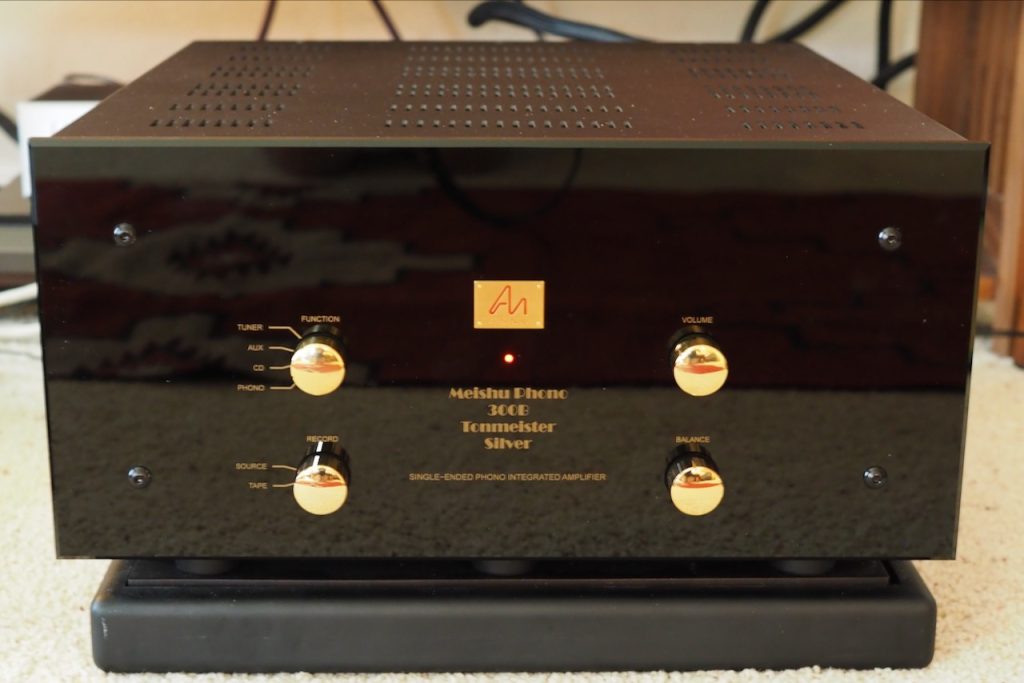
Long time readers know I have a special fondness for high-performance integrated amplifiers, as they represent what I consider to be the value peak on the audio cost-performance curve.
I also really like the reduced component count of an integrated amplifier for simplifying an audio system, which makes it easier for me to optimize the audio system’s voicing for the best system performance.
I particularly like the approach used for the new Audio Note (UK) Meishu Phono Silver Tonmeister 300B integrated amplifier, which has its preamplifier, 300B amplifier, and phono stage all built into one integrated chassis, which reduces the component count from three down to one.
One of the benefits of an integrated amplifier approach is that it eliminates a lot of potentially sound quality degrading connectors, wires, and solder joints.
For example, going from three separate components to one integrated component like the Meishu Tonmeister means that sixteen female and male RCA connectors and their thirty-two solder joints are eliminated, as well as eight lengths of interconnect wire for the two pairs of interconnects that are no longer needed.
Also, two AC power cables are eliminated, as are two IEC connector female plugs in the chassis. That’s a reduction of at least six more lengths of wire, four cable termination connectors, and eighteen solder joints.
Add all that up and that’s a reduction of fifty solder joints, twenty-two connectors, and fourteen lengths of wire when going from a separate preamplifier, amplifier, and phono stage to an integrated amplifier - that’s a lot!
An integrated amplifier 'sings with one voice'. Another benefit of the integrated approach is that instead of the listener having to optimize the voicing between three separate components to maximize performance, all of that has already been done for you by Audio Note (UK), with the preampfification, amplification, and phono stages already optimized to be a single integrated 'voice' for maximum performance.
Then there’s the cost value benefit on an integrated amplifier. To get the same level of performance as a high-performance integrated amplifier like the Meishu Tonmeister, you would have to spend quite a lot more on separate components, not to mention the additional cost of high-quality interconnects and power cables to connect them. It all adds up.
For the frugal among us, putting the money saved with a high-performance integrated amplifier like the Meishu Tonmeister towards better sources, loudspeakers, and cables, typically yields better overall system performance. You get more bang for the buck, at least that’s my experience.
I’m not saying that separate components can’t have amazing performance, they can for sure, but you can also get amazing performance from a high-performance integrated amplifier like the Audio Note (UK) 300B SET Meishu Phono Silver Tonmeister.
There is beauty in simplicity. Personally, I just like the idea of having fewer components in my audio system to keep it as simple as possible.
Inside the Audio Note (UK) Meishu Phono Silver Tonmeister 300B Integrated Amplifier
Now let’s take a deeper look into the design concepts of the new Audio Note (UK) Meishu Phono Silver Tonmeister 300B SET integrated amplifier.
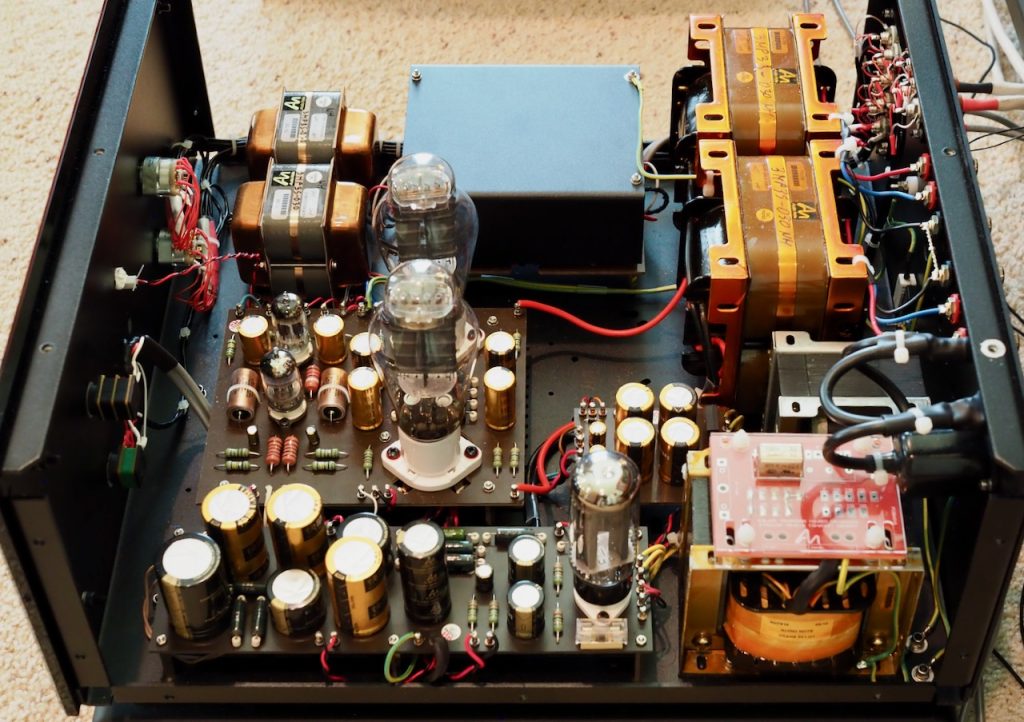
In the Audio Note (UK)’s Performance Level System nomenclature, the Meishu Phono Silver Tonmeister 300B integrated amplifier is a “Level Three” integrated amplifier, whereas the Audio Note (UK) Oto Phono SE Signature integrated amplifier I wrote about in Positive Feedback Issue 108 (HERE) is a “Level Two” integrated amplifier, for example.
What that Level Three designation means in overall design terms is that the Audio Note (UK) Meishu Phono Silver Tonmeister 300B integrated amplifier utilizes a pure Class A, zero negative feedback, directly-heated, single-ended-triode output stage, with valve rectification.
In Audio Note (UK)'s Performance Level System nomenclature, those design elements combine to provide a higher level of overall performance and refinement compared to Audio Note (UK) Level Two designs.
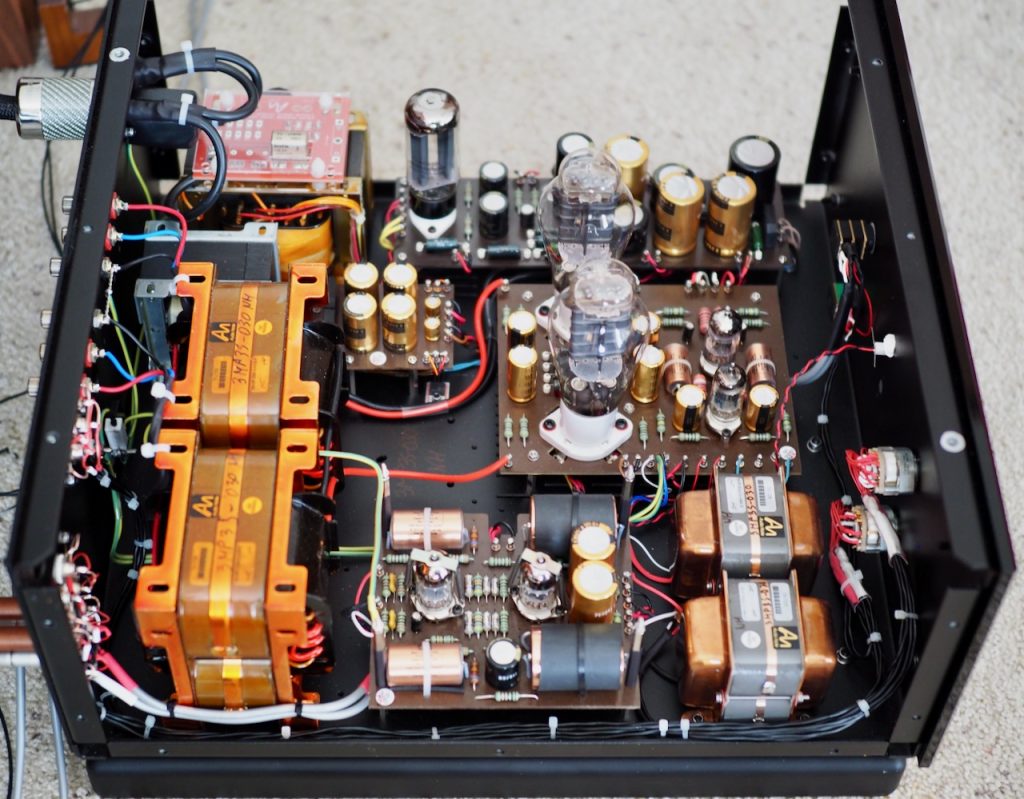
The “Silver” designation in the Meishu Tonmeister's name means upgrades to the standard version’s circuitry with Audio Note (UK) silver internal wiring, Audio Note (UK) copper foil signal capacitors, Audio Note (UK) tantalum film resistors, and Audio Note (UK) HiB C-core output transformers.

Also note the “Tonmeister” designation in the newly redesigned Meishu’s name. The new Meishu Tonmeister utilizes the “Tonmeister Voicing Strategy” - more on this voicing strategy in a moment.
The new Meishu Tonmeister also utilizes a new input and driver stage that is very similar to that found in the top-of-the line 211 triode based Jinro, Tomei, and Ongaku integrated amplifiers, with a “… 12AU7 and 5687 driving an in-house designed and manufactured inter-stage transformer for the best energy transfer, evenness and authority. This is the most important, fundamental upgrade over the original design.” (from the Meishu Tonmeister webpage HERE).
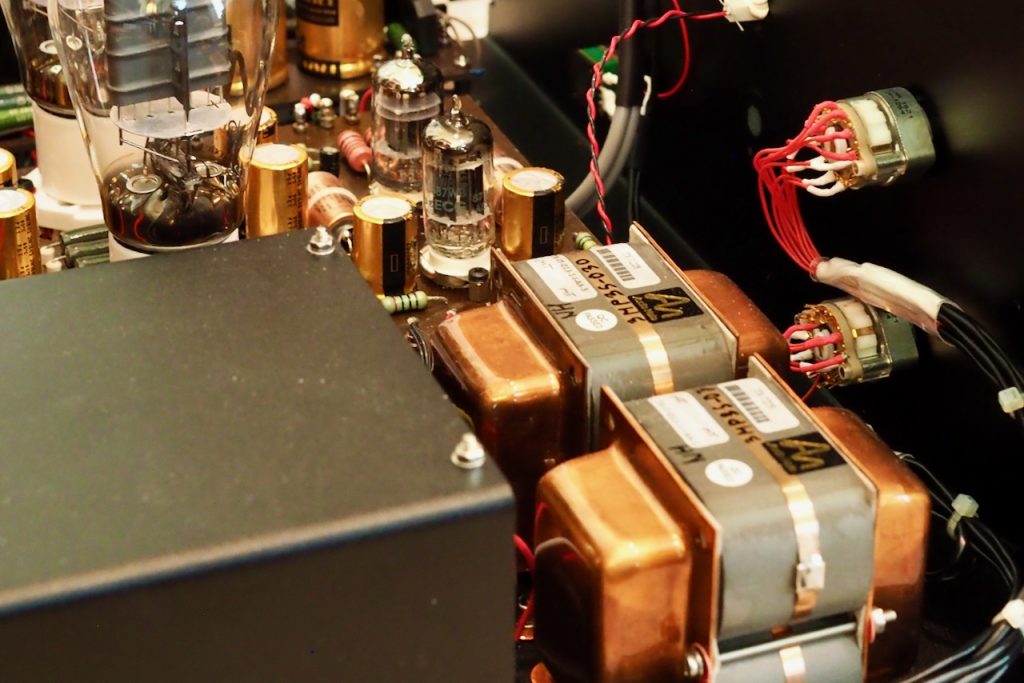
Also new to the Meishu Tonmeister are the output transformers that were designed specifically for the project by Andy Grove, and “… it is not an overstatement to say that they are superb.” (from the Meishu Tonmeister webpage).
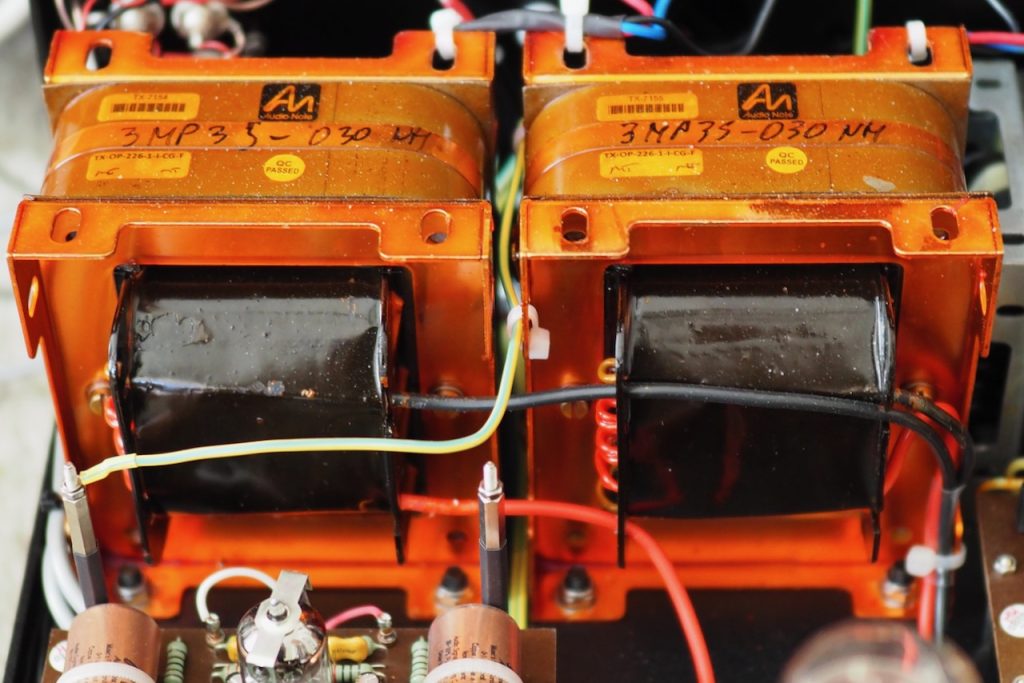
The new Meishu Tonmeister also has a new power supply that “… uses only one mains transformer, one 5U4 rectifier valve, and one choke. When this arrangement is optimized, it works extremely well, producing a very homogeneous and ‘complete’ sound.” (from the Meishu Tonmeister webpage).
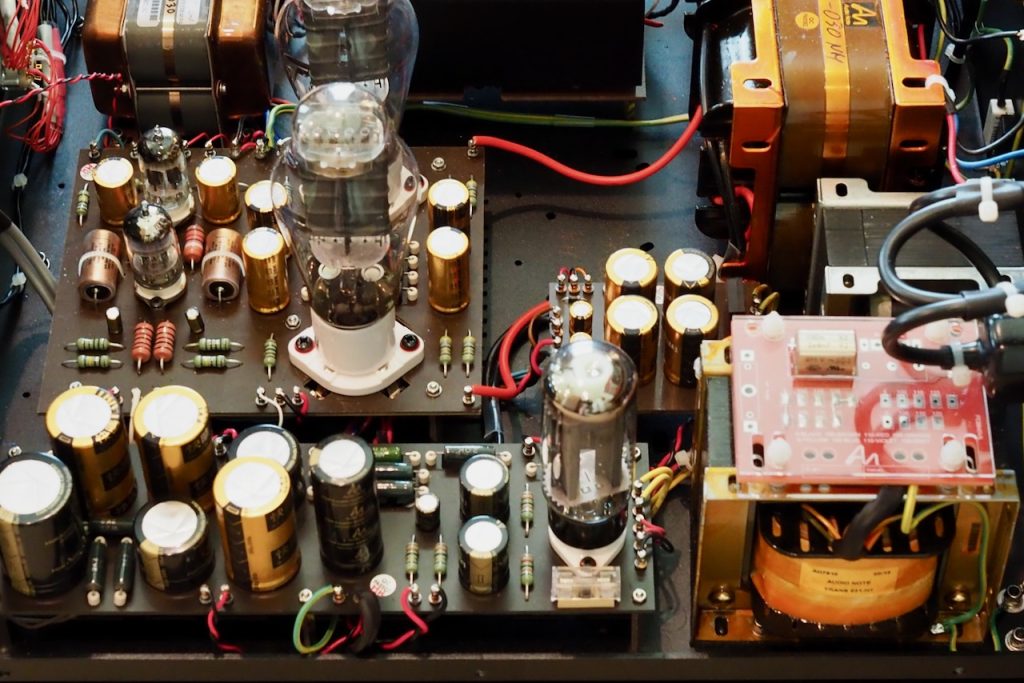
So what do all those new design elements mean for the enthusiast considering the purchase of a new Audio Note (UK) Meishu Phono Silver Tonmeister 300B SET integrated amplifier?
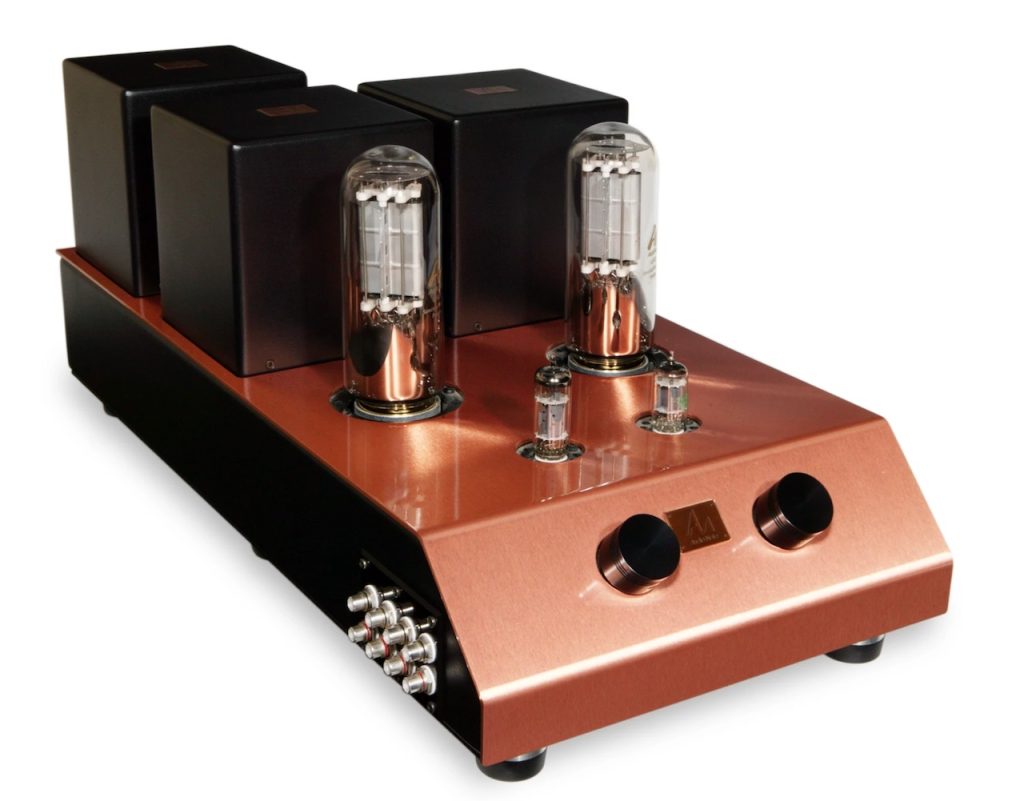
My take on the design of the new Audio Note (UK) Meishu Phono Silver Tonmeister 300B SET integrated amplifier is that it offers a 300B SET design focus, but takes important design insights from the much more expensive Jinro, Tomei, and Ongaku 211 SET based integrated amplifier product lines (above), and in doing so provides a level of performance approaching that of Audio Note (UK)'s highest-performing and most exotic integrated amplifiers, but at a more accessible price point for audio enthusiasts.
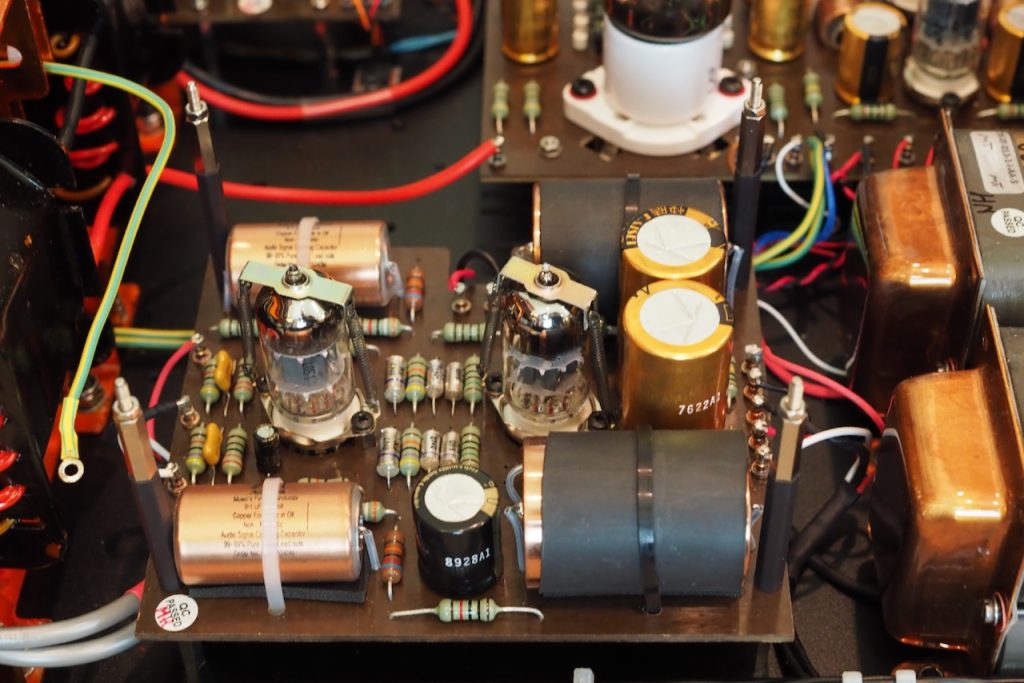
I really like the phono stage design of the new Audio Note (UK) Meishu Phono Silver Tonmeister 300B SET integrated amplifier (above, shown without its shielding in place).
Classic valve phono stages tend to fall into two basic design genres: those like the Marantz Model 7 that use negative feedback (NFB) to achieve RIAA phono equalization; and those like the Harman Kardon Citation IV that use no NFB, and use capacitors and resistors (CR) to achieve RIAA equalization.
So, by analogy, if the Marantz Model 7 phono stage was a ‘push-pull amplifier using negative feedback’ in its design, then the Harman Kardon Citation IV phono stage would be like a ‘single-ended-triode amplifier’ with no negative feedback used in its design.

If you guessed that the phono stage in the new Audio Note (UK) Meishu Phono Silver Tonmeister 300B integrated amplifier is a zero-feedback, single-ended design, with a CR passive RIAA equalization network, then you would be exactly right.
I asked Audio Note (UK)’s Darko Greguras (Design and R&D Engineer, Technical Manager), and Andy Grove (Senior Engineer, Research, Product Conception, Design, Management, Technical & Creative Writing, Strategy & Marketing) if they could tell us a little more about the design of the Audio Note (UK) Meishu Phono Silver Tonmeister 300B integrated amplifier.
Here’s what Darko Greguras had to say about the design of the Meishu Tonmeister Silver’s phono stage:
“We call our ECC83/12AX7 and ECC88/6DJ8 phono stage a classic with good reason, as it is a zero-feedback, single-ended design that we use in a number of our products, like our M1 and M2 preamplifiers, and the Oto, Soro, and Meishu Tonmeister integrated amplifiers.”
“These products utilize essentially the same phono stage design, with slight variations of components to optimize their performance with the component parts used elsewhere in their designs, and their power supply arrangement.”
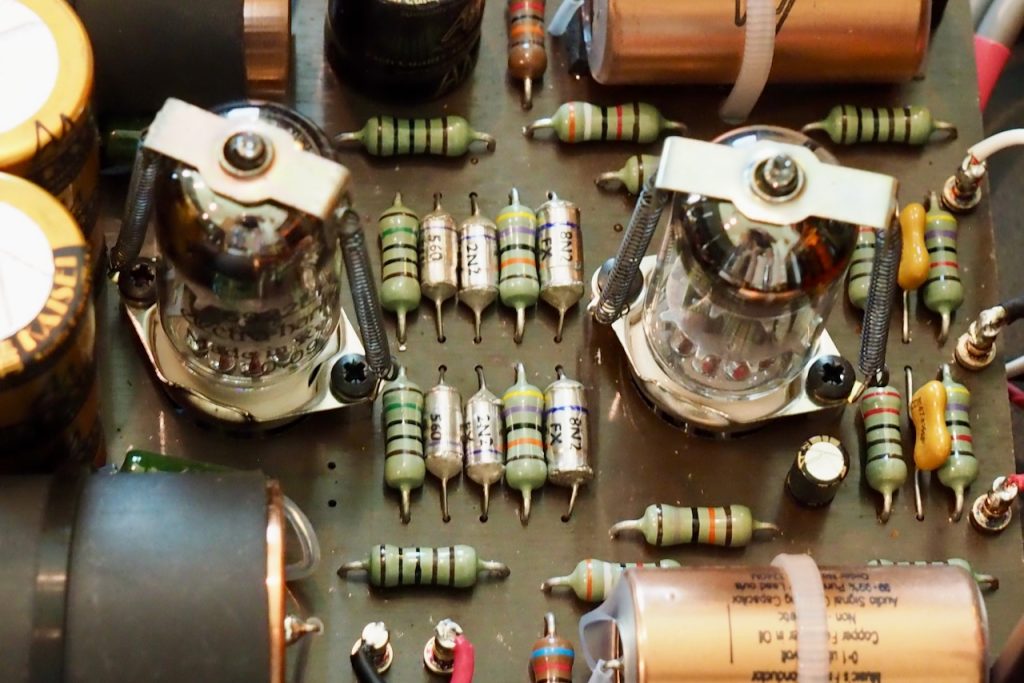
“The phono stages are designed to provide the best sonic blend of the ECC83/12AX7 and ECC88/6DJ8 dual triodes in anode followers, with RIAA correction between the stages, that are optimally biased for a good dynamic transfer, yet sweet transients.”
“In the M1 phono stages, and Oto and Soro phono stages, the power supply is based on solid state diodes.”
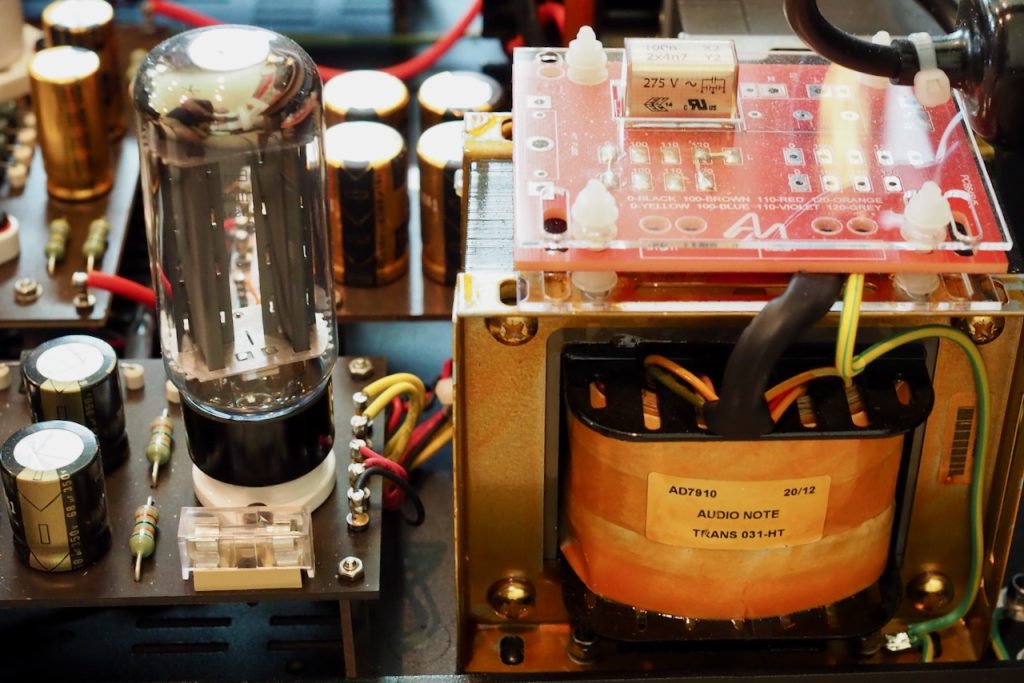
“The M2 phono stage, and the Meishu Tonmeister phono stage, benefits from the valve rectification and chokes utilized in the power supply, which gives them a more natural sound quality, with richer harmonics, that is closer to real life.”
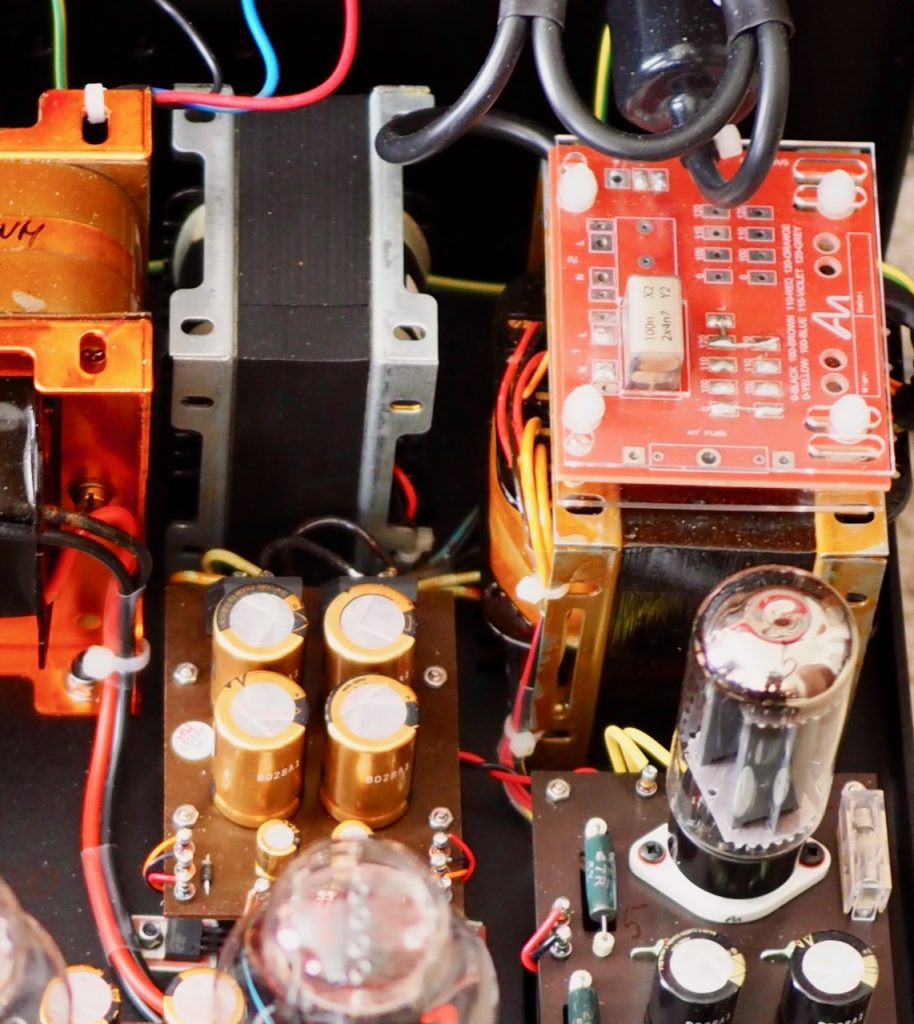
“The parts optimization through these variations means an even step up from the metal film Vishay / Beyschlag resistors and standard electrolytic capacitors, Audio Note (UK) tin capacitors, and copper wiring, to a mix of 0.5 and 1W Audio Note (UK) tantalum resistors, a mix of Audio Note (UK) standard and Audio Note (UK) Kaisei series of electrolytic capacitors, Audio Note (UK) copper coupling capacitors, and copper wiring. As we move up the ladder of these components parts, they have less sound of their own.”
“This is what the Tonmeister Voicing Strategy is all about. Voicing is a fine art, with one aspect being understanding the differences of various transformer core materials and different winding designs/strategies, both on a scientific and “Kung Fu mastery” level. This is fundamental, as transformer behavior is most critical at a very low signal level. The new generation of Andy’s (the Professor) transformers is on another sonic level, and I am very much enjoying these in our recent Meishu Tonmeister prototype at home, even in a most basic application.”
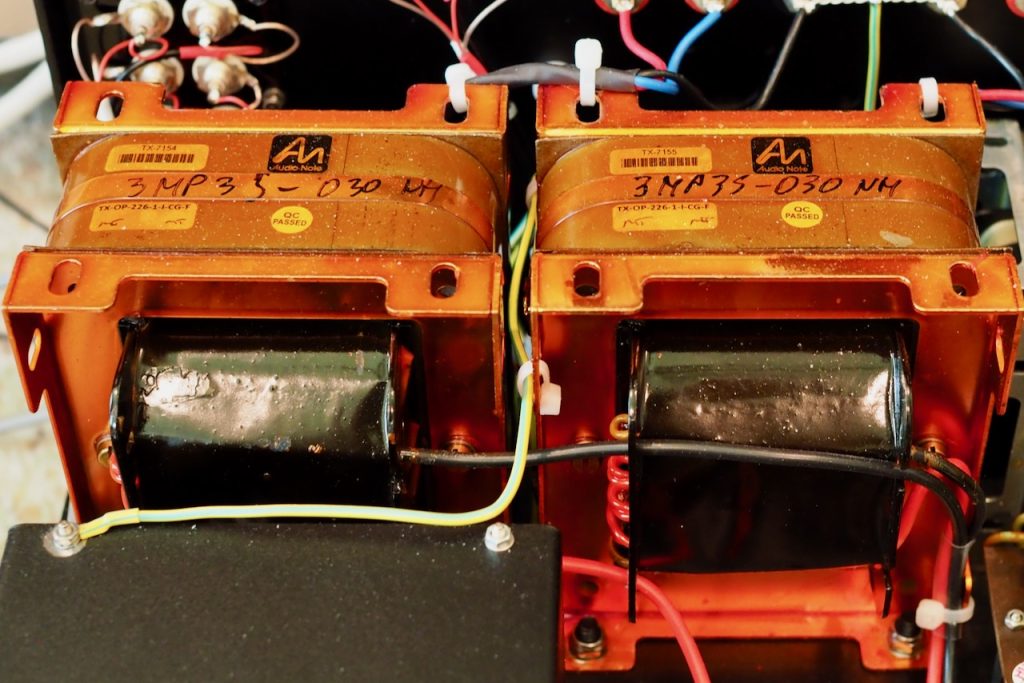
“As we increase the quality of the output transformer, its core material and primary and secondary windings material, we naturally elevate the parts around it to suit the increased resolution and it’s improved low-level behavior. This then naturally involves a change in board materials, the wire gauge used for point-to-point wiring, resistors and capacitors, etc.”
“The basic Level Three structure is more than happy singing from it’s EI core output transformers combined with a copper wiring, a mix of 0.5 and 1W Tantalum resistors, Audio Note (UK) copper coupling capacitors, and standard Audio Note (UK) electrolytic capacitors.”
“However, the Silver Signature Level 3 with its Super HiB copper wound transformers “wants” more in terms of quality and a cross sectional area of the conductors used for the point to point sections, so 2W non-magnetic Ni-chrome resistors and a blend of Audio Note (UK) standard and Kaisei electrolytic capacitors responds to this task well, retaining a sonic balance of the lesser combination but extending the grip and believability.”
“Components choices are carefully considered in every product in order to maintain the Audio Note (UK) signature sound quality at each performance level, and also ensures significant sonic improvements as one moves up through our performance levels.”
I asked Andy Grove if he could tell us a little more about the new transformers he designed, and how they relate to the new Meishu Tonmeister design strategy:
“As Darko mentioned, the Meishu Tonmeister uses a similar three-stage transformer coupled signal flow to that in the Jinro, Tomei and Ongaku 211 SET integrated amplifiers.”
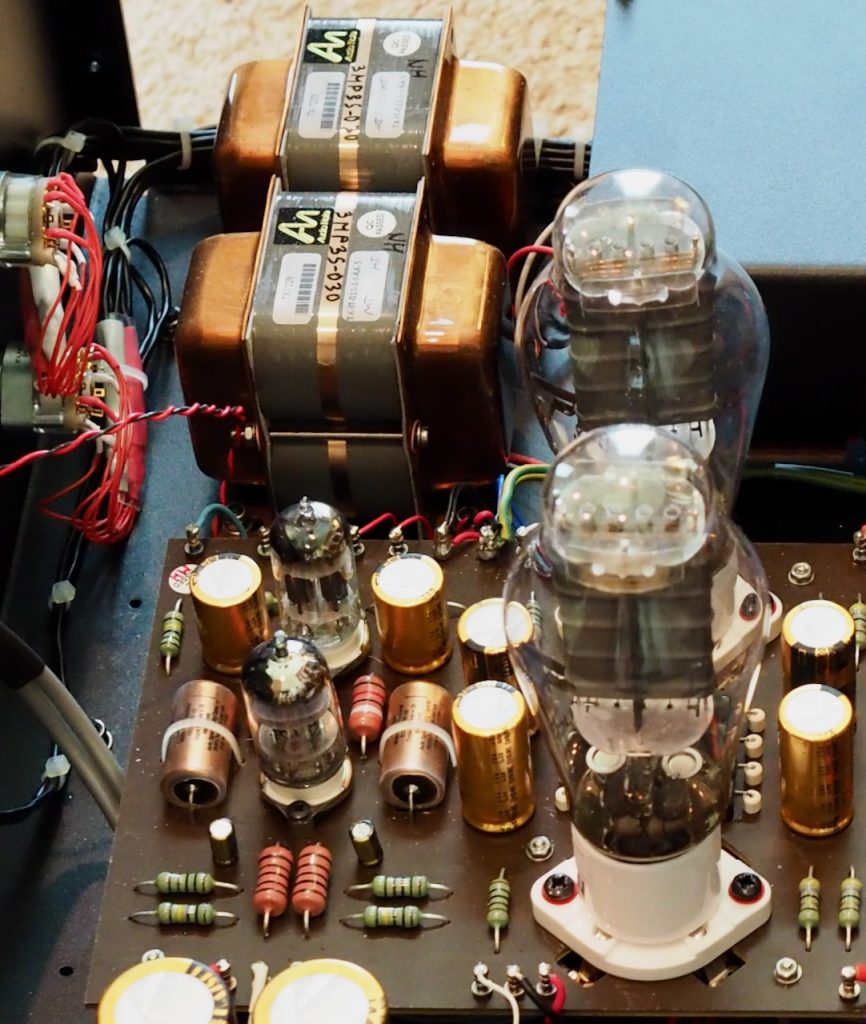
“There are numerous different ways to drive a single-ended triode. Most of the time it’s done by RC (resistor-capacitor) coupling of some kind, with the driver valve usually being another triode amplifier stage, or sometimes a pentode amplifier (Western Electric 91A approach).
“Many of Audio Note’s amplifiers are configured this way, and it works very well!”
“Another option that is sometimes used is to insert a cathode follower buffer between the amplifier stage and the output valve, which can also be arranged to drive the latter’s grid positive, giving increased power output.”
“One of my early products used an EF86 pentode capacitor-coupled to a paralleled 6350 twin triode as a cathode follower, which was direct-coupled to a 211. It sounded pretty good!”
“Early on in the experimental process though, back in the early 1990s, I realized that transformer coupling to the output valve was the way to go – and it’s more or less mandatory for larger low mu triodes like the 845 and DA100.”
“Transformer coupling like this is certainly not new, many historical Western Electric amplifiers used it. It’s also a recommended approach in old data-books from GEC, BBC, etc., and it’s possible to buy off-the-shelf transformers to do the job.”
“What’s different in what we do here at Audio Note (UK) is the bifilar wound 1:1 single-ended interstage. It’s something I came up with around 1992 while looking into driving larger and lower mu triode output valves where a voltage swing of +/- 150V to 200V peak to drive to full power is where you’re at.”
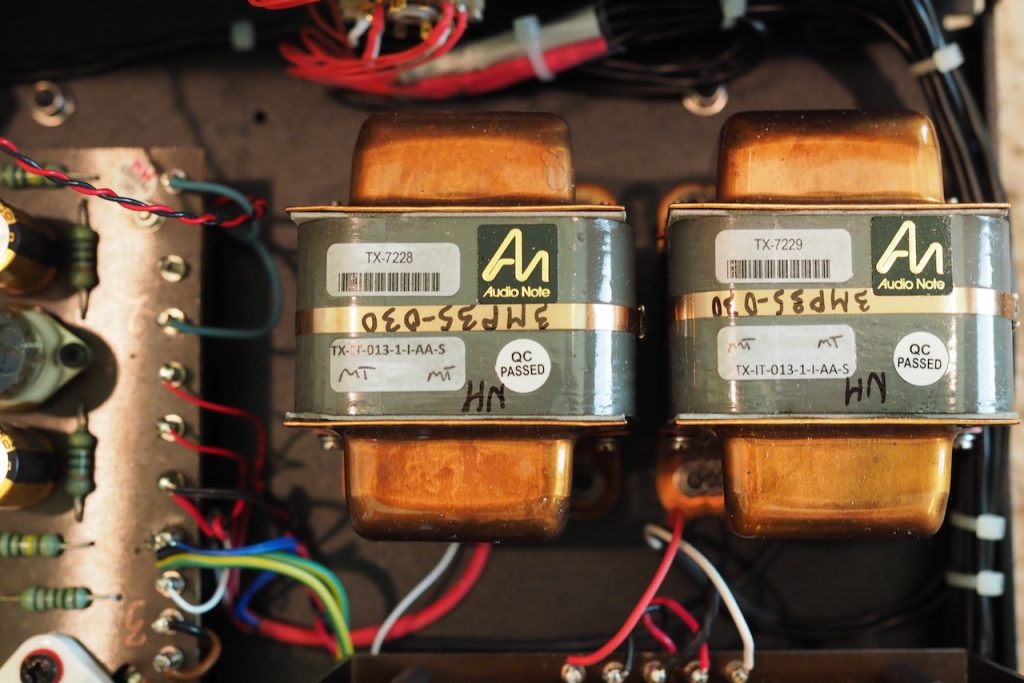
“The problems with using a resistively loaded triode, like a 6SN7, to get 200V peaks are:
1) unfeasibly high HT voltage, and 2) nonlinearity.”
“Taking point 1) unfeasibly high HT voltage: First, you can easily visualize that to get +/- 200V, you need to have a quiescent anode voltage of the driver stage of 200V, and to swing up to 400V. But, that’s not possible. We actually have to sit at something more like 300V because it’s not possible for the valve’s anode to swing down to 0V, therefore we need a bit left over – say 100V.”
“To swing positive, the situation is similar, we need at least another 100V. So the quiescent is 300V, and we need a HT voltage of at least 300V more, so the HT is 600V. Minimum.”
“Talking point 2) nonlinearity: This is due to the variation of all valves’ characteristics with changing conditions, so, change the anode voltage and its anode impedance Ra will change. Change the anode current, and its transconductance Gm will change.”
“With resistive loading, we are changing both at the same time. Obviously we need the change in voltage, as that’s the signal, but we are also changing the anode current because the signal is also appearing across the load resistor.”
“Overall, it means it’s difficult to swing a nice, clean +/- 200V using an RC coupled amplifier stage. The HT ends up being so high it fries the valve at switch on, the resistor is red hot, and you have 10% distortion.”
“Transformer coupling helps here because, in the quiescent condition, there is very little dropped across the transformer primary. That means, if you want 300V anode voltage, you can have an HT of 310V or whatever. Choke loading is similar.”
“However, with ‘normal’ inter stage transformers, like those from Tango, you need a pretty heavy load on the secondary to prevent it ringing and, even then, you may see -3dB at 20Hz and 15kHz.”
“And, of course, we have only solved part of the problem, the nonlinearity is still there!”
“One advantage to even this kind of transformer coupling is that now your output valve grid is securely tied to ground, not via a 470k resistor. Ever wondered why KT88s and EL34s have a tendency to melt down? Clue: It’s grid current …"
“I thought all that was unacceptable, so thought hard about what to do about it.”
“What’s interesting about triodes is that, if you keep the anode current stable, and swing anode volts, the amplification factor A remains reasonably stable. The product of Ra and Gm remains fairly constant.”
“Therefore, a constant current source can provide good theoretical linearity, but you need the high HT again, and you are back to square one with the grid resistor of the power valve.”
“Nice try, but it’s not a solution, and you need a MOSFET transistor or whatever in your valve amp.”
“By the way, I am always amazed at circuits with one valve and twenty-five ‘clever/corrective’ transistors around them. What is the point there? Why not just build a MOSFET amp to start with? Why bring a bunch of flowers into your house and spray them with air freshener?”
“There is a way to wind a transformer which has excellent coupling primary to secondary, as long as the ratio between the two is 1:1. The technique is called Bifilar winding.”
“The coupling is so good you don’t need a load on the secondary, because the valves own impedance, Ra, damps the secondary winding itself, and, you can use a zillion turns and get great bass response.”
“The new transformer designs are manufactured in-house here at Audio Note (UK) and, of course, incorporates our fancy wires, wire coatings, and core materials into them.”
“So, after that long winded explanation about the transformer, I’ll finish up by explaining a little more about the Meishu Tonmeister overall topology, which is:”

“In → Volume Control → Input Valve → RC Coupling → Driver Valve → Inner-Stage Transformer Coupling → Output Valve → Output Transformer → Out.”
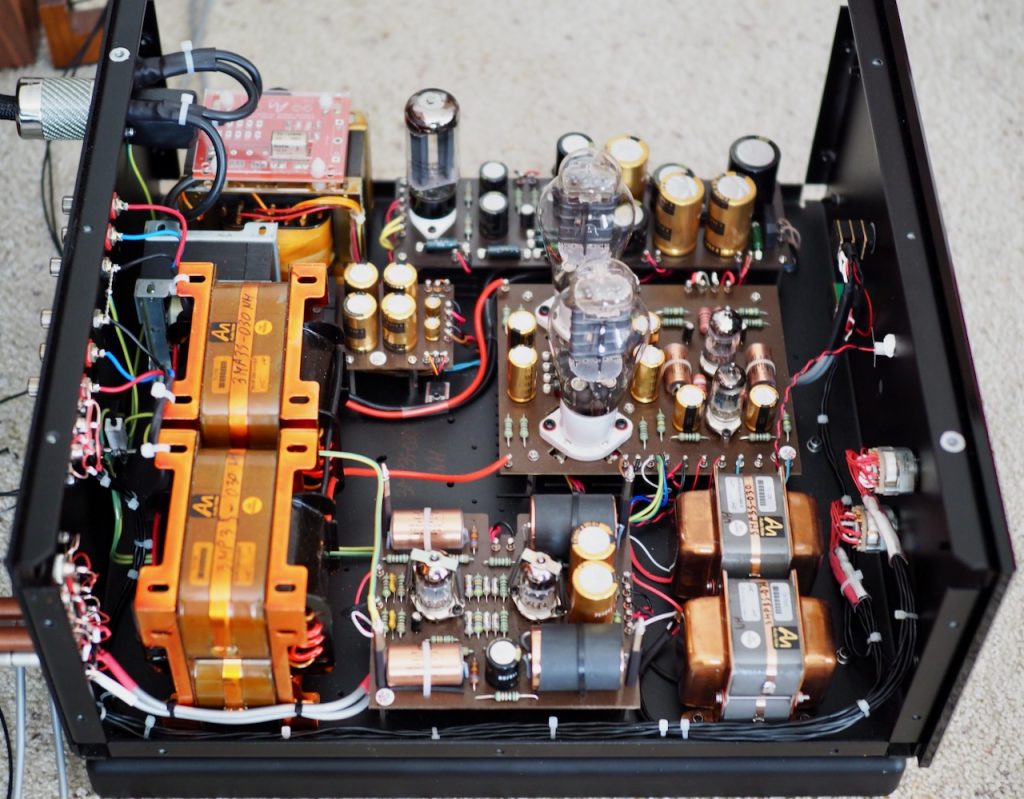
“As the signal comes in, through the volume control, the input valve provides a bit more gain so the input signal can be line level, which means we are generally talking about integrated amplifiers like the Meishu Tonmeister.”
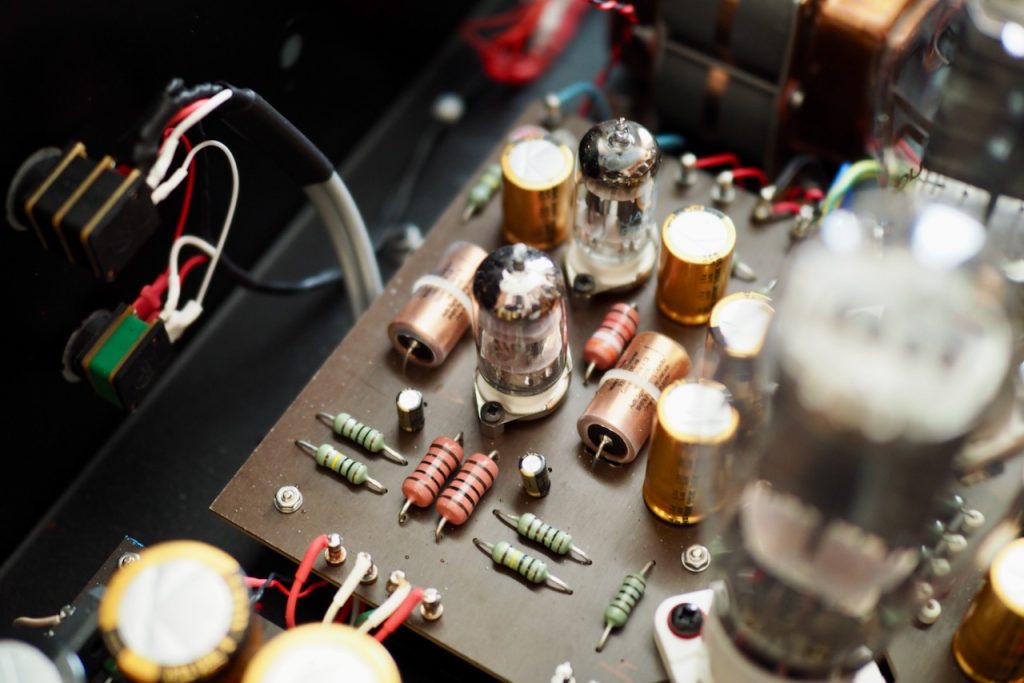
“RC coupling is used in the Meishu Tonmeister, as we don’t need a lot of voltage swing, and because it allows some flexibility to shape the tone and bandwidth of the system, and to avoid cascaded stages of similar nature – which is another advantage of using transformer coupling, it ‘s kind of like amplifier stage genetic diversity.”

“Next comes the interstage transformer coupled stage, which I have been bleating on about in discussing my new transformers designs.”
“Then the 300B output valve and output transformer, which is common to most amps of this type.”
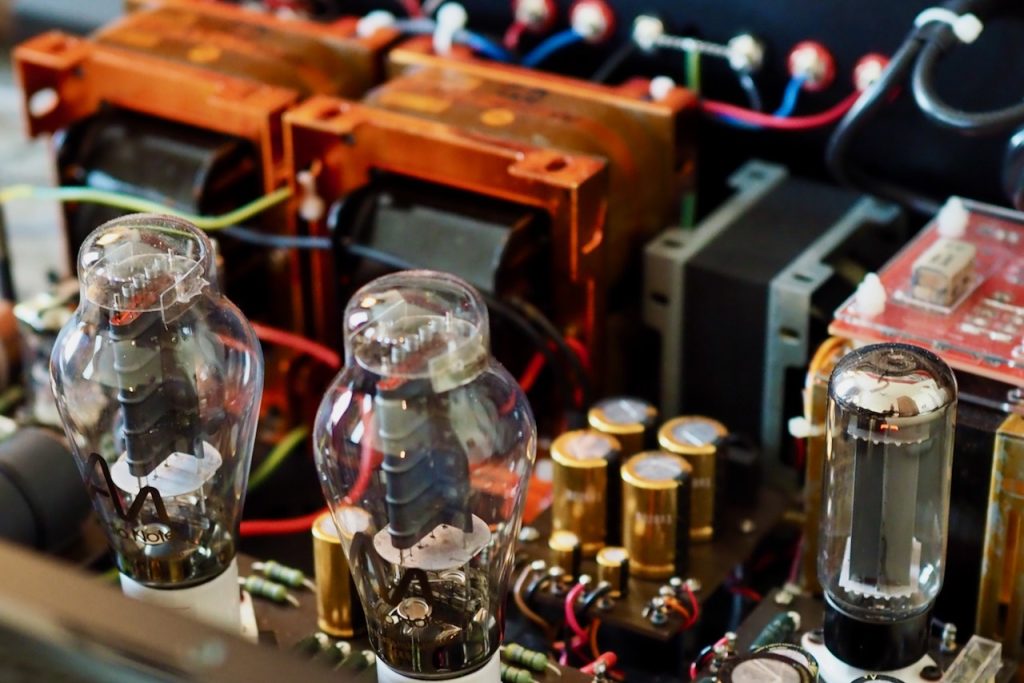
Many thanks to Darko and Andy for elaborating on the design aspects of the new Audio Note (UK) Meishu Tonmeister.
To summarize, the new Audio Note (UK) Meishu Phono Silver Tonmeister 300B integrated amplifier is a “Level Three” integrated amplifier that utilizes a pure Class A, zero negative feedback, directly-heated, single-ended-triode output stage, with valve rectification.
The Meishu Tonmeister has a new power supply utilizing one mains transformer, one 5U4 rectifier valve, and one choke.
The Meishu Tonmeister has an important new input and driver stage similar to that found in the top-of-the line 211 triode based Jinro, Tomei, and Ongaku integrated amplifiers, that drives Andy’s newly designed interstage transformer as discussed above.
The Meishu Tonmeister has new output transformers that Andy designed specifically for this project.
The Meishu Tonmeister “Silver” version adds circuitry upgrades with Audio Note (UK) silver internal wiring, Audio Note (UK) copper foil signal capacitors, Audio Note (UK) tantalum film resistors, and Audio Note (UK) HiB C-core output transformers.
The Meishu Tonmeister “Phono” version adds a zero-feedback, single-ended, CR passive RIAA equalization network phono stage.
All of those newly incorporated design elements adds up to a new Audio Note (UK) Meishu Phono Silver Tonmeister 300B SET integrated amplifier’s design focus that incorporates design elements from the much more expensive and exotic Jinro, Tomei, and Ongaku 211 SET based integrated amplifier product lines, but at a much more accessible price point.
Let’s do a ‘walk-around’ of the Audio Note (UK) Meishu Phono Silver Tonmeister 300B SET integrated amplifier.
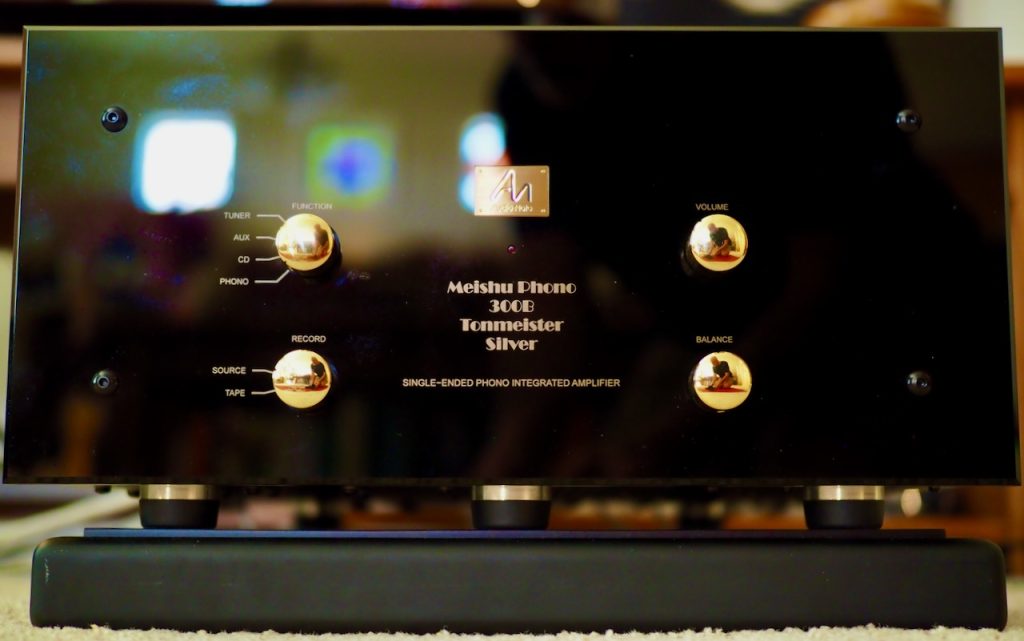
Starting on the left side of the front panel you see two selector knobs. The top knob is the source “Function” selector, for phono, CD, an auxiliary source, and tuner.
Just below the Function selector is the “Record” selector knob, for switching between source and tape monitoring while recording.
On the right side of the front panel there are also two selector knobs. The top knob is the volume control, and the knob below it is the balance control.
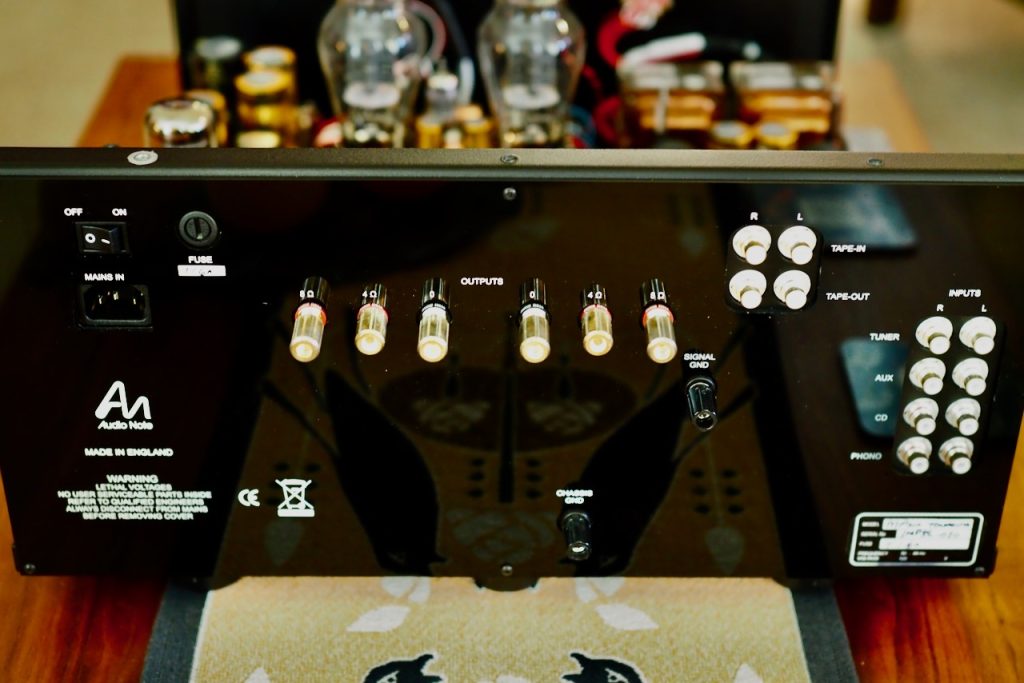
Starting on the left side of the back of the chassis you can see the power on-off switch in the upper left corner, with the fuse holder just to its right.
Just below the power switch is the IEC connector female plug for a power cord.
Going to the center of the chassis you can see six silver binding posts for the right and left channel speaker cables, with connections for ground, 4 Ohms, and 8 Ohms.
To the right - and just below - the left channel binding posts is a signal ground for the phono stage. Further below the left channel binding posts you can see a chassis ground.
To the right, and above the left channel binding posts, you can see a pair of silver “Tape-In” female RCA connectors, and just below them a pair of silver “Tape-Out” female RCA connectors.
To the far right of the chassis are four pairs of silver female RCA input connectors for a tuner input, an auxiliary input, a CD player input, and the phono stage input.
Underneath the chassis are six heavy-duty footers.
Peter Qvortrup (Audio Note (UK)) told me to be careful of my back while unpacking and lifting the Meishu Tonmeister out of its shipping container, as it is a big heavy amplifier.
That’s good advice, as at 29.5 kg (65 pounds), and dimensions of 220 mm / 8.7 inches height, 460 mm / 18.1 inches width, and 530 mm / 20.9 inches depth, the Meishu Tonmeister is a handful to lift and move around. I used proper lifting techniques, and my back did just fine.
Review System
The loudspeakers used for this article were my Tannoy Westminster Royal Special Edition loudspeakers, with custom external Duelund CAST crossovers. The West’s relatively high 99dB sensitivity made them an excellent match for the Audio Note (UK) Meishu Phono Silver Tonmeister 300B SET integrated amplifier’s 8 watts per channel of output power.

The superb Audio Note (UK) Io I MC phono cartridge, AN-S4 step-up transformer, and AN-V silver interconnects (review HERE) served as the vinyl source, in combination with my custom CTC Garrard 301 turntable.
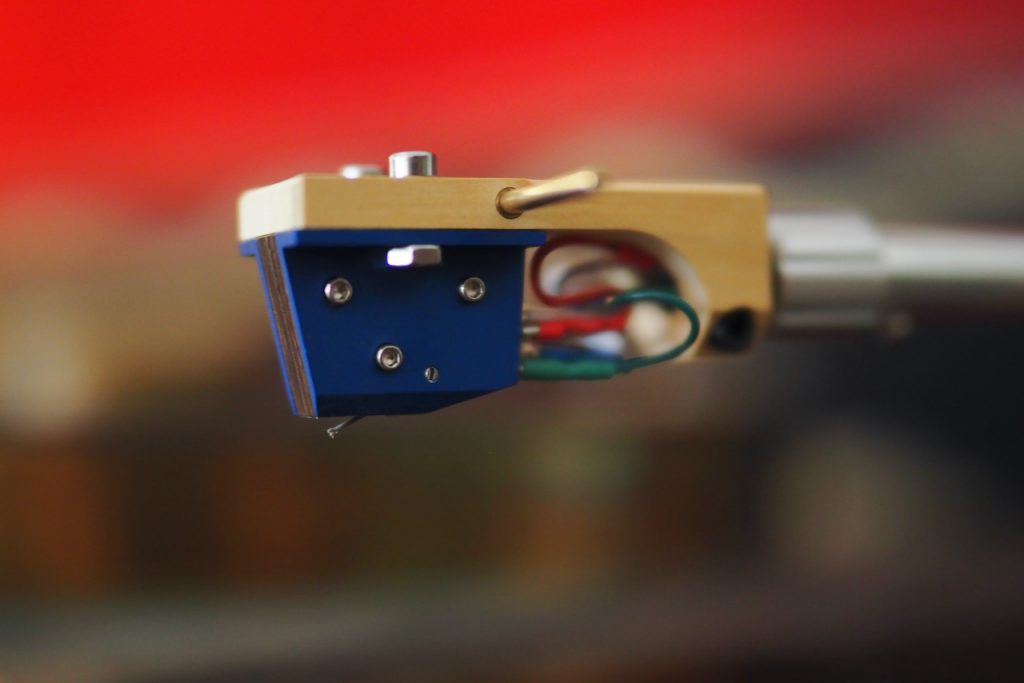
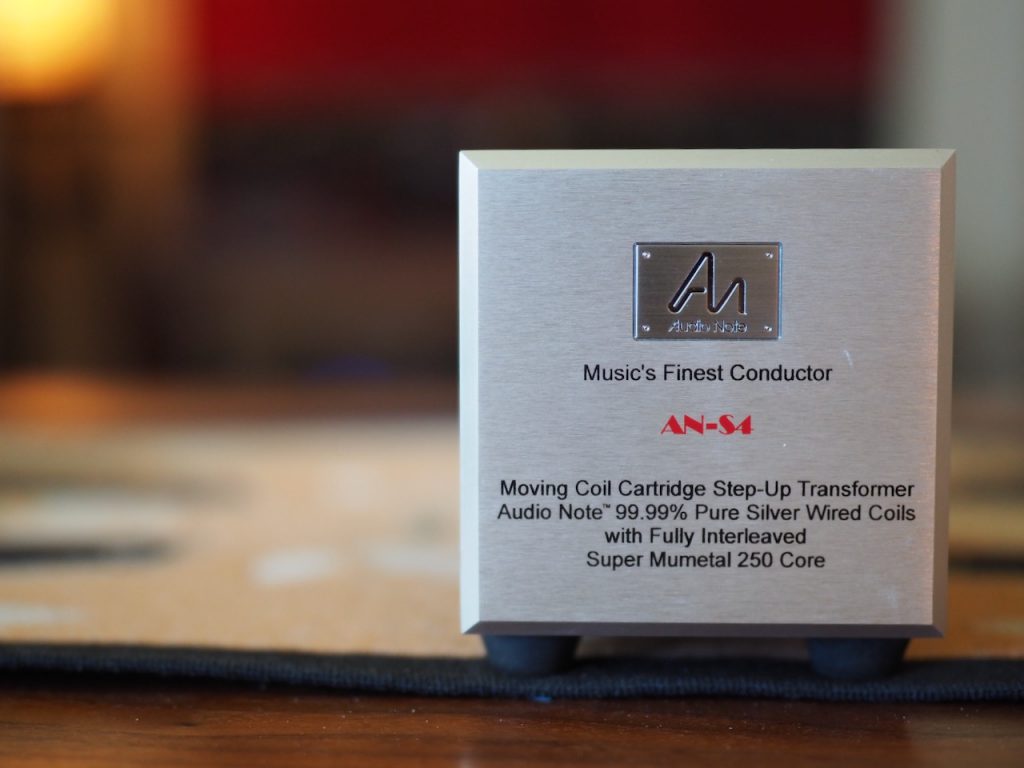
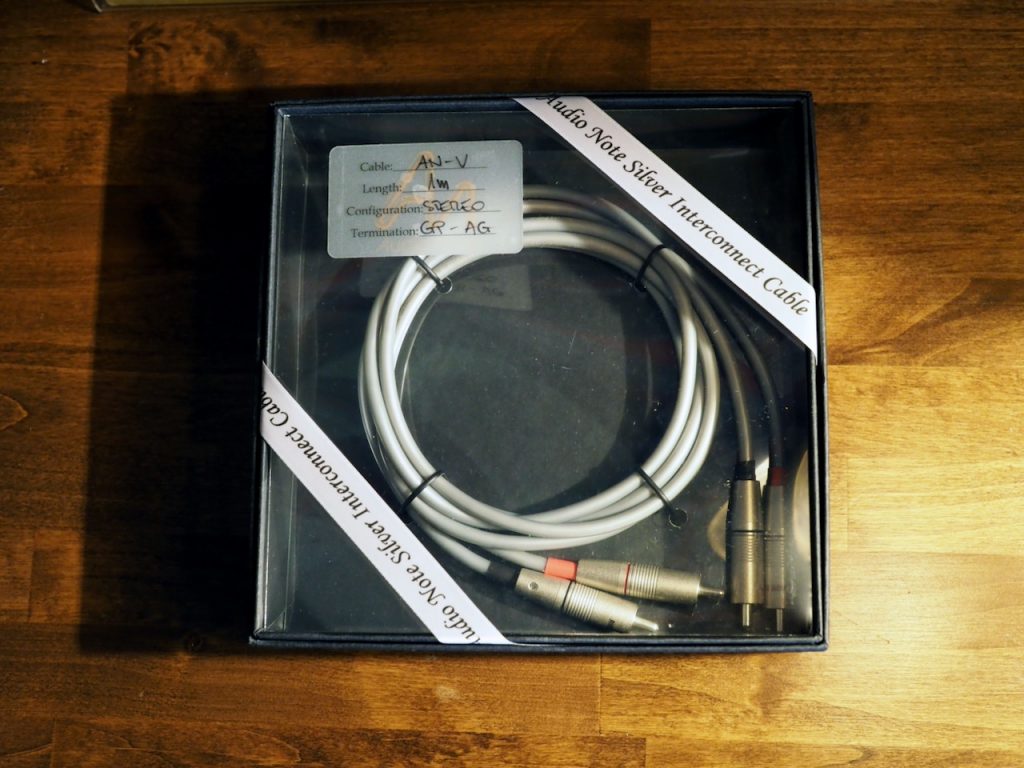

The equally superb Audio Note (UK) CD 4.1x Red Book CD player (review HERE) served as the digital source.
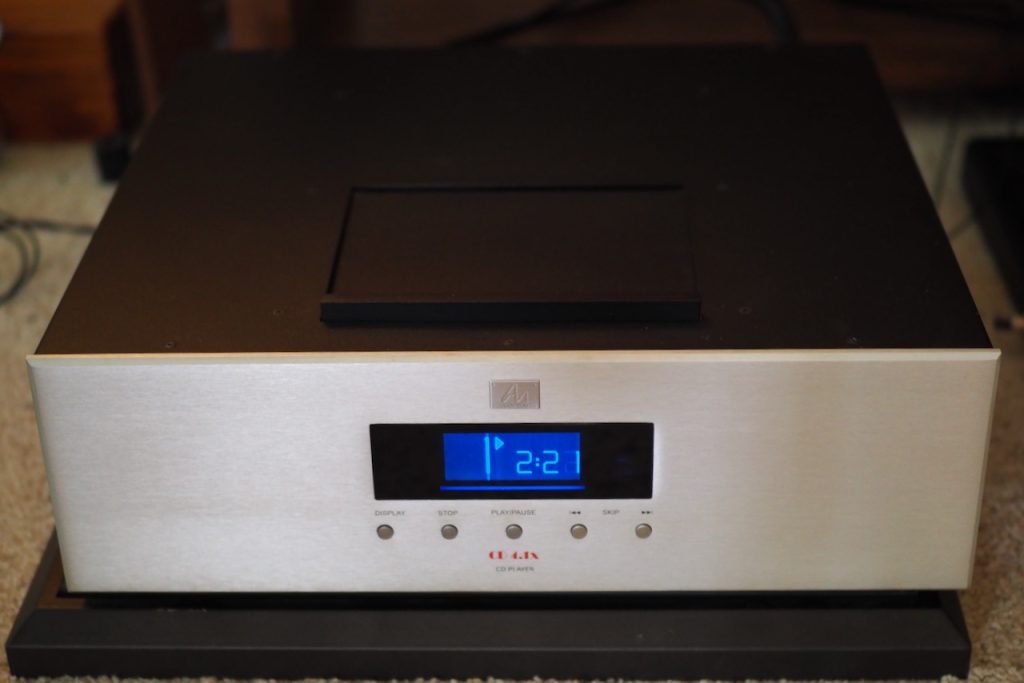
Duelund DCA16GA tinned-copper interconnect cables connected the Level Three Meishu Tonmeister to the Level Three Audio Note (UK) CD 4.1x Red Book CD player, while Level Three Audio Note (UK) AN-V silver interconnects connected the Meishu to the Audio Note (UK) AN-S4 step-up transformer, and Level Four Audio Note (UK) AN-SPe silver speaker cables (HERE) connected the Meishu Tonmeister to my Westminster loudspeakers.
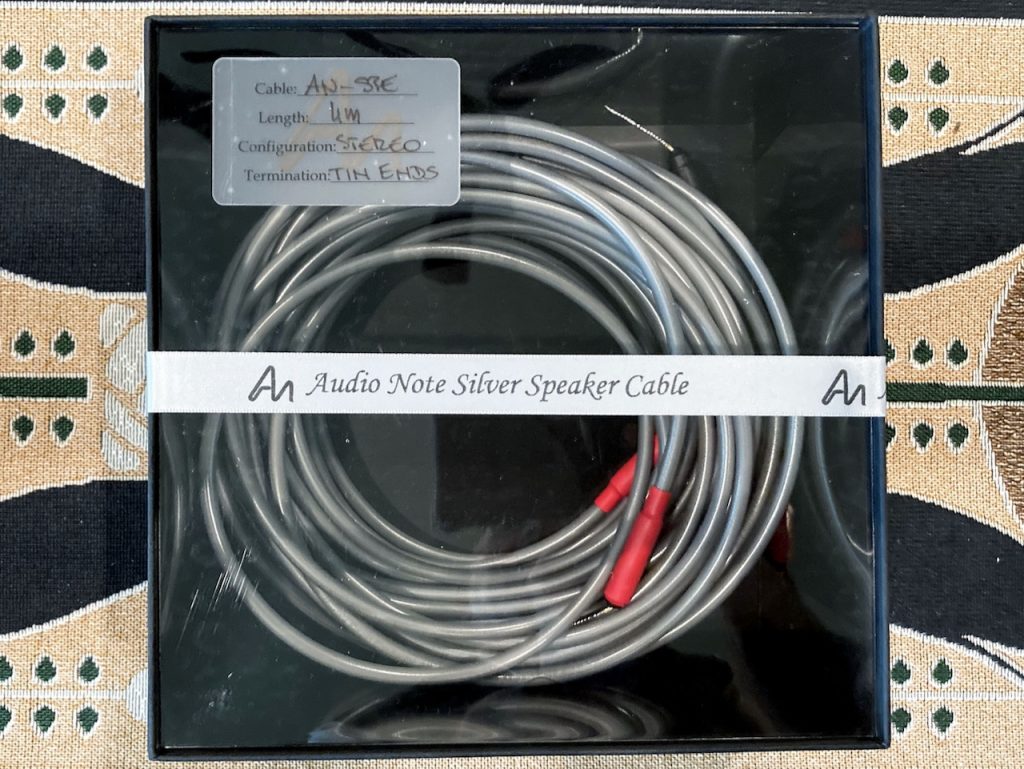
Components were placed upon Acoustic Revive RST-38, TB-38, and RAF-48 isolation platforms.
Power cables for all the components were Acoustic Revive Absolute, which were all plugged into an Acoustic Revive RPT-6 Absolute NCF Power Distributor unit, which itself was connected to wall AC with an Acoustic Revive Absolute power cable.
My AC wall outlets consisted of the Acoustic Revive CB-1DB receptacle base plate, CFRP-1F carbon fiber outlet plate, and an Acoustic Revive modified Oyaide R-1 receptacle.
Listening Impressions
Ok, that's it for now. The full feature review of the new Audio Note (UK) Meishu Phono Silver Tonmeister 300B single-ended-triode (SET) integrated amplifier for Positive Feedback will be published in the next week or two.
As always, thanks for stopping by, and may the tone be with you!





























